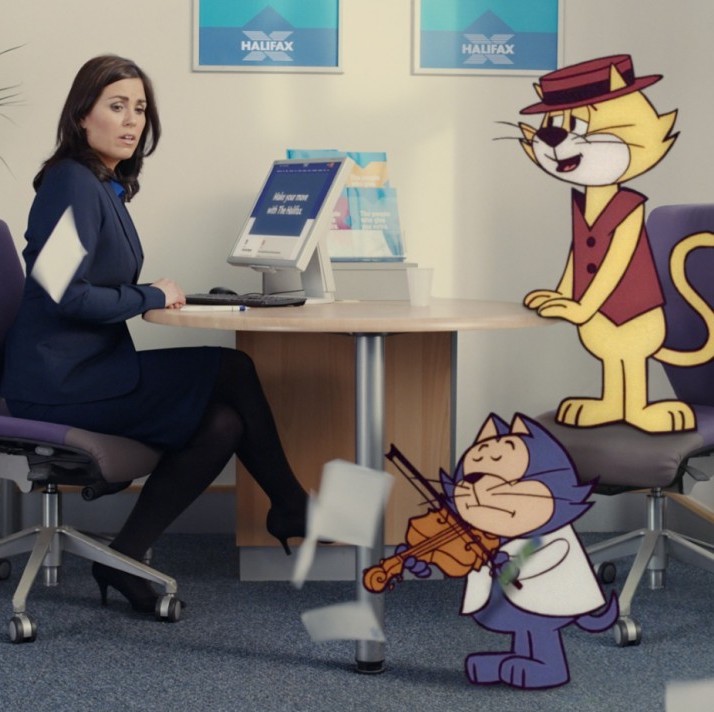Nostalgia Marketing//

How brands like Halifax and MoneySupermarket.com use nostalgia marketing and the considerations
Ahhh, the good old days. Remember when you could play in the street as kids because there were less cars around? Or you didn’t have mobile phones so you had to check in with your mum every couple of hours when you were outside playing all day? Or you built dens, climbed trees and cycled to nowhere in particular? And watched Top Cat and The Flintstones on Cartoon Network every day… sometimes whilst eating chocolate pudding with pink custard? Gotta love nostalgia.
Nostalgia marketing
The use of nostalgia in marketing isn’t a new or even surprising approach for brands to take. We are obsessed with the past and on social media it clearly shows. Apps like Timehop and Facebook are showing us our memories every day, hoping you’ll re-share old content to elicit reactions from friends. Millennials are passionate about 90s nostalgia in particular; creating and sharing memes, gifs, videos and articles based on childhood memories. Only yesterday was I watching clips of The Wedding Singer on YouTube – a film over 20 years old and still making me laugh.
Scientific American says that “by allowing people to revisit cherished life experiences, nostalgia boosts positive self-regard and promotes the feeling that life is full of meaning and purpose.” So, it would make sense that brands are trying to capitalise on the use of nostalgia in their marketing to connect with their target audience and in turn generate warm, positive feelings about their brands by association.
Examples of brands who use nostalgia marketing currently
Halifax is an example of a brand strategy based on using nostalgia to engage with the masses; relying on strong, emotional triggers to help sell its products like mortgages, current accounts and extra rewards. It started with Top Cat and now covers old cartoons like The Flintstones, Scooby-doo, Thunderbirds and more recently The Wizard of Oz:
Each ad campaign belongs in a series that directly ties into their brand strategy and is an approach used by many other brands.
MoneySupermarket uses He-man and Skeletor to entertain their target audience and have also released an ad this year featuring Action Man as part of their ‘Save Money, Feel Epic’ campaign.
So, what are the considerations when deciding whether to use nostalgia in your marketing?
Licensing – obviously, and be prepared to pay handsomely for it. For this approach to be successful, you’ll need to invest well and deliver an integrated campaign with significant reach, which means licensing across many if not all mediums. You’ll also need to change up the creative execution often enough so that your ads keep performing over time.
Different generations respond to nostalgia differently – there is a difference in purchase motivations for Baby Boomers than Millennials. So, check that you have married the nostalgia topic and your brand / product carefully to avoid switching off your audience.
The connection you make must be believable in this twitter-led day and age. Halifax was caught short in the first of its ads (2016) where it offered Top Cat a mortgage. The outpour on Twitter wasn’t that positive. We do a lot of mortgage advertising and know that Top Cat would not be a suitable candidate for a mortgage, with any lender. And here’s why:
Fast forward to 2018 and Halifax’s rebooted mortgage campaign now features the Wizard of Oz and a carefully included caveat that Dorothy can’t have a mortgage yet because she is too young, which is the world we live in when advertising in the financial services sector.
Social and nostalgia tactics go hand-in-hand so you should make the most of it. Using hashtags like #TBT (Throwback Thursday) and #FBF (Flashback Friday) are just the start in amplifying feel-good brand vibes. But be careful when using social media and nostalgia to try to create positive brand associations – remember when McDonalds launched a twitter campaign with the hashtag #McDStories? Think about all the pitfalls before you rush in. I don’t even need to include examples of that horror story…
So, what’s next for Halifax?
Given how much Halifax has invested and how long they ran the ‘gives you extra’ campaign, it’ll need a long list of childhood programs they could use – so to help, I thought I’d poll the team at Factor 3 for some suggestions:
Sources: YouTube, Scientificamerican.com, Twitter, chiefmarketer.com, dailymail.co.uk